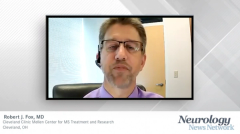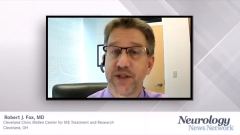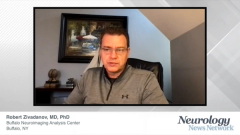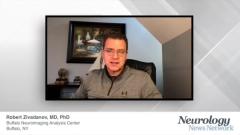
Reversing Neurodegeneration in Multiple Sclerosis
Robert Zivadinov, MD, PhD, provided insight on the different components that need to be addressed to help stop—and potentially reverse—neurodegeneration in MS.
Episodes in this series

Transcript below.
Robert Zivadinov, MD, PhD: There is certainly an inflammatory component when studying the disease. There are so many immunomodulatory treatments and some of them decrease or abolish absolute inflammation. Let’s say that’s achieved and now you have a patient that has no inflammatory component of the disease or very little inflammatory component, this patient will usually continue to progress.
Continuing to progress despite no evidence of inflammatory activity is because of 2 reasons. One, there is underlying neurodegeneration that has already been triggered and you can’t stop it. Or, there are additional factors that are contributing to that neurodegeneration that are not inflammatory related. In the first case, once you completely stop neuroinflammation, you would like to have this holy grail of remyelination treatments that can reverse achieved disability and probably promote remyelination in any possible way, like getting a higher number of oligodendrocytes to grow, support the axon, and allow remyelination with less inhibiting factors to do so.
Even if you do that, if you don’t take that causative factor of further non-inflammatory neurodegeneration, it may still not succeed. The second talk I presented at CMSC was on the concept of human endogenous retrovirsuses in the ATA188 study. That’s an example of trying to develop treatments against the Epstein Barr Virus (EBV) and these other endogenous retroviruses because those may be involved in further driving the neurodegeneration.
I think it’s a 3-component problem. First, you take away the inflammation. Second, you define and stop the factors that may lead to further neurodegeneration, including those that are related to microglial activation, not just EBV, but also microglia activation. Thirdly, once you stop the disease, you look to try to reverse what has already been damaged. In that sense, the stem cell transplantation is also extremely important. To some extent, maybe stem cells are the best example of a treatment strategy that completely stops the disease, including the inflammatory and neurodegenerative part. Because you stopped the disease, the patient is improving. All because you’re allowing your regenerative internal system, these oligodendrocytes that are not affected anymore, to repair. It would be just sufficient or definitely important to stop the disease per se because then our organism would be able to recuperate as much as it can, like children can after stroke.
Newsletter
Keep your finger on the pulse of neurology—subscribe to NeurologyLive for expert interviews, new data, and breakthrough treatment updates.
























